After a long (unplanned & unannounced) break from writing, I’m returning to this space that feels like a home. Thank you for being so patient through this moment of transition. I hope this newsletter finds its way to more regularity!
Sharing about life in Kamikatsu gives me so much joy—being able to write what I see and experience helps me cultivate attention for reflection. If updates from the Japanese countryside sound inviting to you, I hope this space can bring you joy.
Even though most people in the northern hemisphere would consider February too early for spring, according to the micro-seasonal calendars of Japan, risshun ‘beginning of spring’ has arrived. The coldest of nights have passed and inklings of spring are dotted everywhere.
Probably my favourite reminder of warmer days on the near horizon is the buds of wintersweet, robai. As early as mid-January, well in advance of the plum or cherry blossoms, the landscapes are dotted with honey-scented yellow flowers.

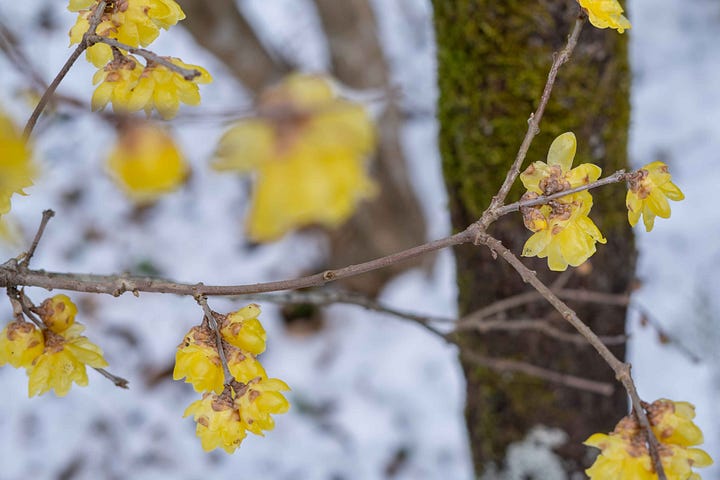
A personal update is that my partner moved to Japan over 1 year ago. He received his visa last February 14. As with all new beginnings, this transition hasn’t been without its challenges, but it has truly been a gift. To rediscover Kamikatsu with my partner is to see the village with new eyes. A couple of weeks into living together, he found a waterfall behind our house on a path I had walked a hundred times before and thought I knew intimately.
We fall into patterns, drawn to the comfort of familiarity, and to be shaken from it can be like seeing anew. I found a re-awakened wonder for being present and writing came to a pause. It also meant that I had to shift and share priorities, but now it feels like we're creating a rhythm that works for us and I hope that this adjustment means I’m here more regularly.
Kancha, a rare Japanese tea
I’m glad to be back to share the story of kancha—a rare tea made only once a year in the winter.
I fell into the world of tea after moving to Kamikatsu village. This summer will be my fourth year of making awa bancha, a fermented tea special to this terroir. I didn’t intend to be a tea farmer—I didn’t set forth to learn about different cultivars of tea trees or understand the different tea families.
I always believed myself to be a happy, generally un-opinionated, consumer of whatever tea was served to me. But, growing up Asian, I’m also accustomed to the bitter and earthy flavour of pu’er from Sunday dim-sum and soothed by the roasted notes of barley teas from Japan. I wasn’t a stranger to teas, but I certainly didn’t think I would explore rare teas in such a remote part of Japan.
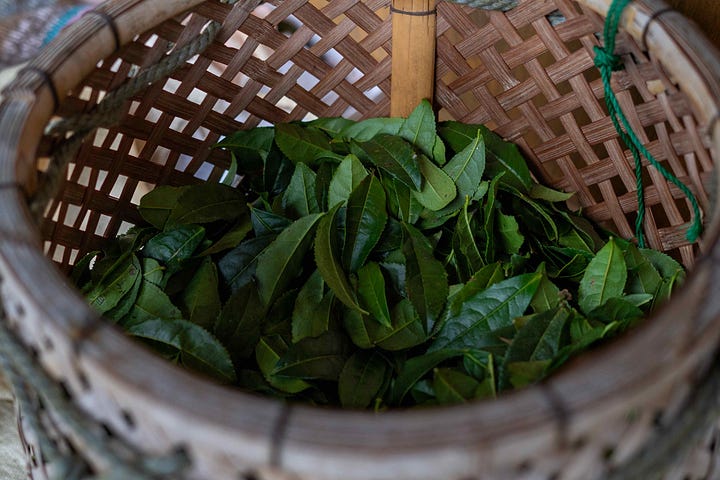
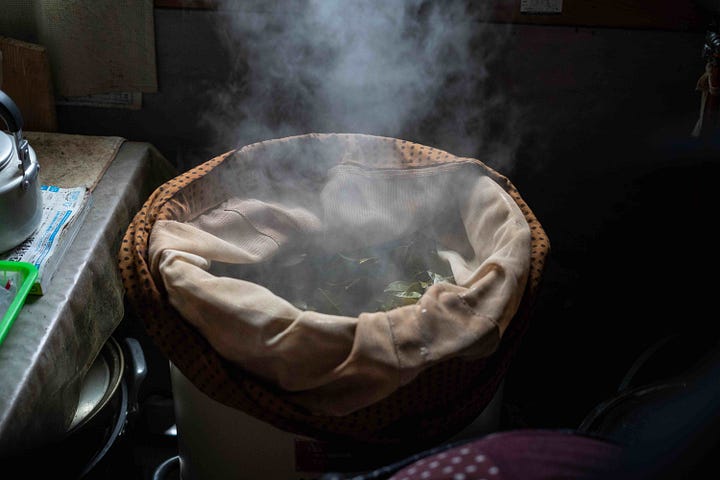
Kancha translates directly to ‘winter tea’, referring to the leaves that are harvested during winter. As summer and autumn pass, the leaves store plenty of nutrients for the winter. When January marks the start of the new year, the season for harvest begins. The picked tea leaves are steamed, rolled, and sun-dried.
This special tea is only produced by a handful of people, and those who do know how to make it are ageing. Since kancha is a tea that is made mostly to be consumed by local people, this tea is considered a rare folk tea—a type of tea that’s culturally embedded, and the craft is carried on by ‘common’ people (not commercialized).
With kancha, everything feels more delicate than the summer’s ferment of awa bancha. If awa bancha is wiping the sweat off your brows and using force and speed to strip a branch clean of its leaves, kancha is rubbing your hands warm and inspecting leaf by leaf before plucking them off. There’s a softness to kancha—a yin and yang to awa bancha.
Ishimoto-san
In a small village in another mountainous region of Tokushima prefecture, kancha is made by only one grandmother, Akemi Ishimoto-san. She welcomed us to her home and said to us, “please, please, call me ‘kancha baa’chan’ (kancha grandma)”.

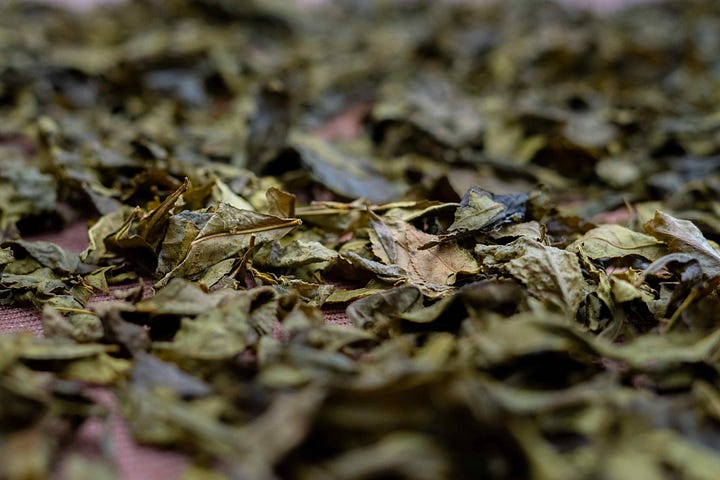
Ishimoto-san, who lives in a small village of about 10 people, is 86 years old. A village of only 10 people is as quiet as you would imagine it. She is strongly considering retiring after this year’s winter harvest in 2024. Without someone taking over, this might be the last year this tea is picked and sold. I visited this village to learn more about this tea and, together with a small documentary team, keep her story.
Ishimoto-san is soft-spoken and reserved in nature. She won’t answer more than what’s asked, but gently nudged, she can dig into earlier memories and her stories stream gently like the river running in front of her house. We visited her 3 days in a row, and on the third day it was pouring rain and all we did was drink kancha and listen to her stories.
Ishimoto-san grew up during the years after the war. At that time, Japan was poor and people suffered from shortages. Gender norms were fixed and before having the chance to consider what she might want to do with her life, she found herself in an arranged marriage and became a seamstress because it was stable work for women.
Only at 50-something, did she feel like she had had autonomy. No longer feeling the burden of her family and society’s expectations, she decided to start making tea. If you’re feeling too old to start something, consider Ishimoto-san who started making tea after 50.
Over 15 years ago, there were about 20 women who made kancha in Kuo. They formed the Women of the Kancha Production Committee to produce and sell tea together. Sadly, today, Ishimoto-san is the only remaining tea maker. The others have passed or stopped making tea.
Making kancha gives Ishimoto-san a sense of purpose and identity. Perhaps a Japanese word you’ve heard of before is ikigai, which translates loosely as ‘that which makes life worth living’. For Ishimoto-san, kancha is her ikigai. She laughed when she told us this as if she realized at that moment that the tea is her reason for being.
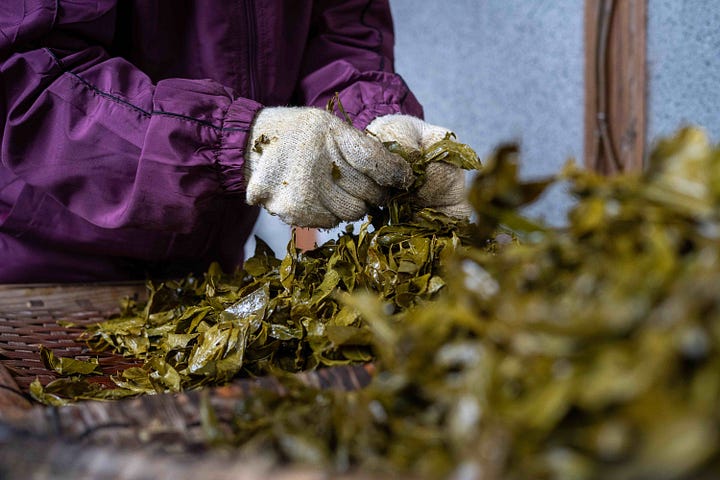
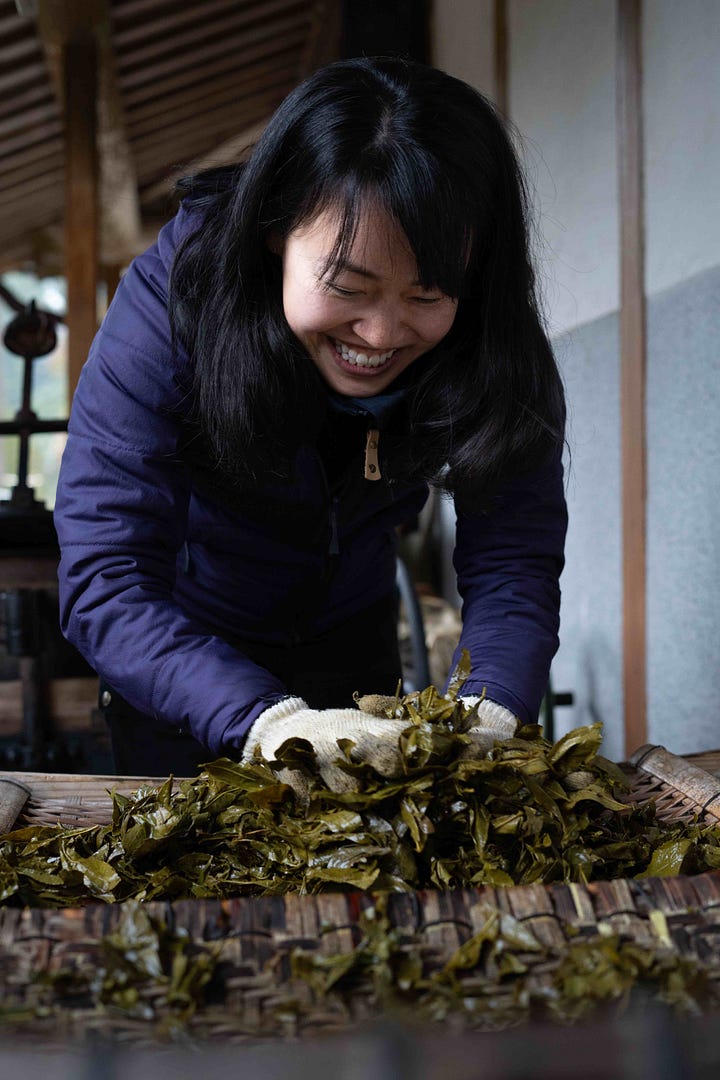
After picking, steaming, and rolling the tea, the final step is kneading the leaves. As Ishimoto-san slowly hand-rolls the tea in a circular motion, she explains why she does this step even though others skip it. If you’ve seen a baker knead the dough, it feels similar in the way that there is a constant flow with the wrist lifting and pushing, the fingers expanding and drawing in. It looked easy until I tried it and I found my fingers fumbling and tea being pushed in all directions.
She explains that during this step she talks to the tea and says, oishiku naa re (おいしくなあれ). “Be delicious, be healthy”, she wishes her tea. There’s an intangible, wonderful quality to something handmade—perhaps it’s a platitude to say that aijō or love (愛情) is a special ingredient, but with Ishimoto-san the delicateness, care, and attention to detail make me truly believe that whoever drinks her kancha can feel the ripples of her effort.
I have an inkling that this won’t be Ishimoto-san’s last season of making kancha, since her abundant energy doesn’t point towards signs of stopping. But if this truly was her last winter making tea, it was an honour to spend this time with her.
After a day’s work, we sit around Ishimoto-san’s well-lived and well-loved working space to drink one last cup of kancha.
Tell me if you enjoyed this story. Let me know if you’d like to try a cup of kancha!
Wishing you all a wonderful Sunday and week ahead.
Take care,
Kana


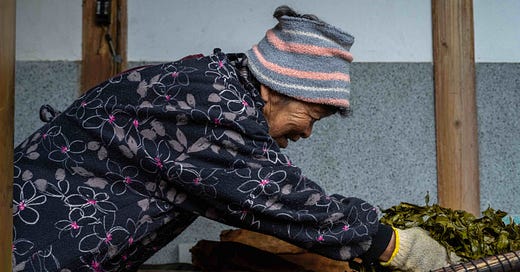





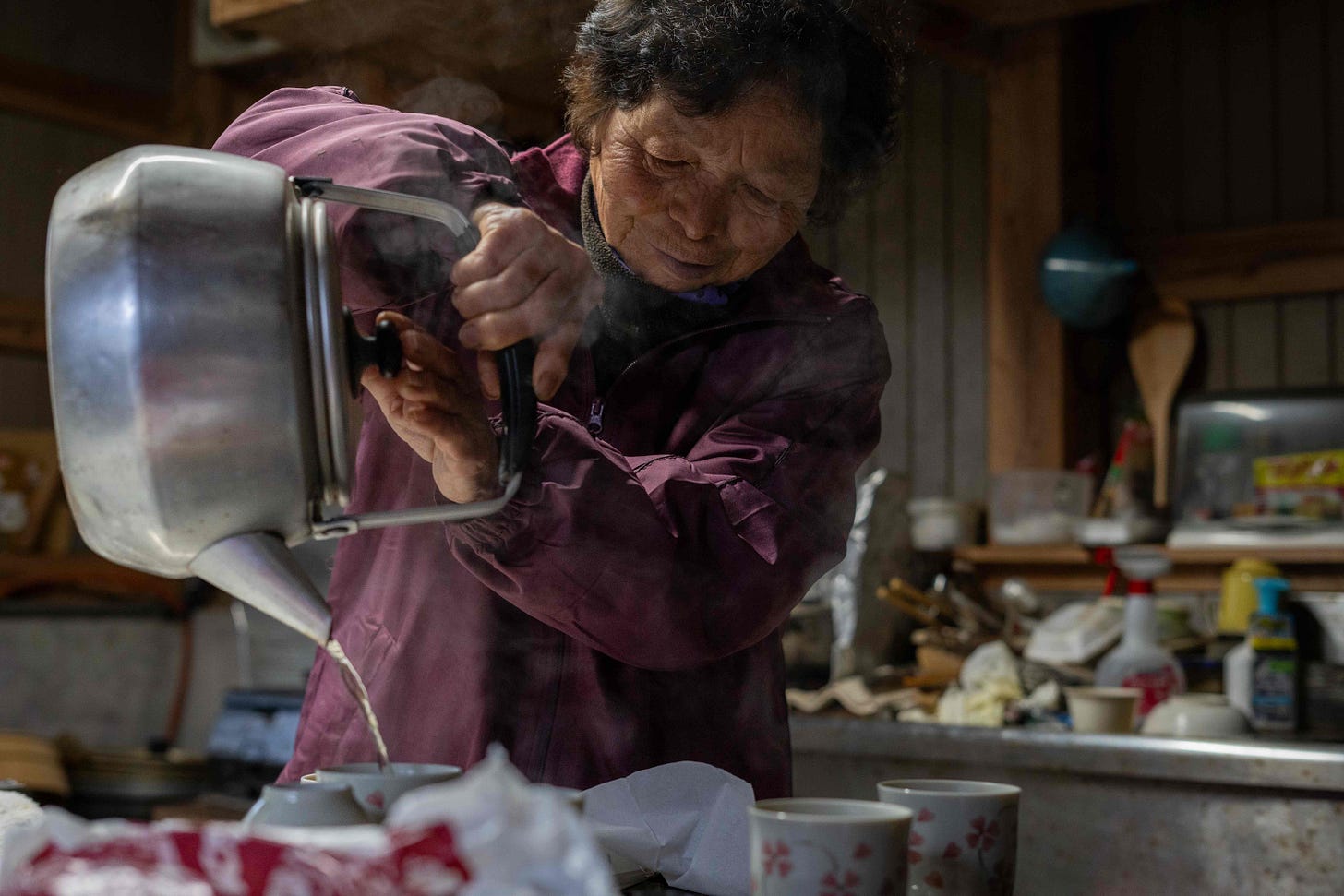

Thank you for writing again. I cannot describe the unexpected feelings of joy and reast I get while reading about a distant garden in Japan.
this was so beautiful to read; my mouth waters for kancha. please share more about the documentary as well once you are able 🙂